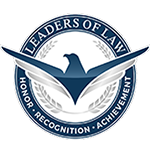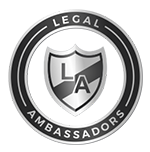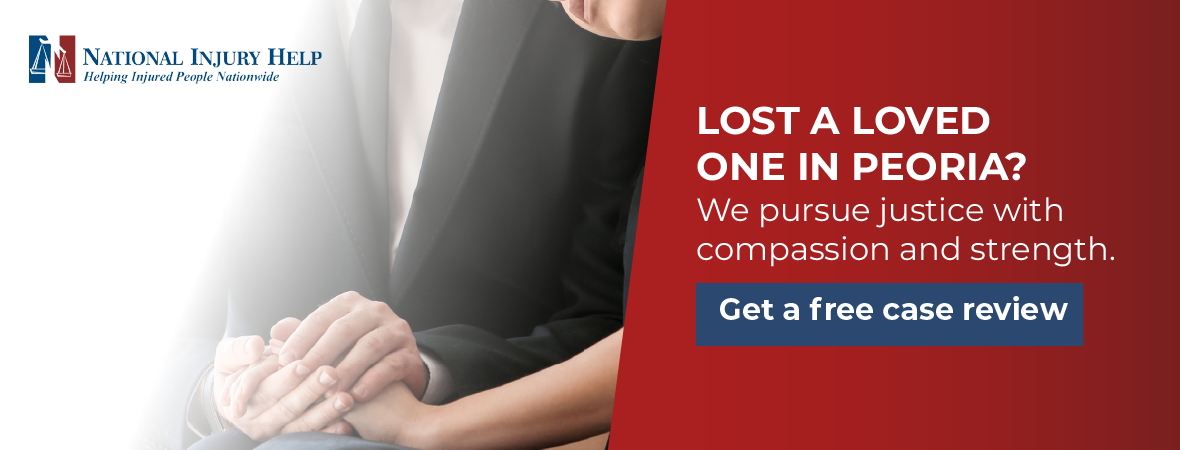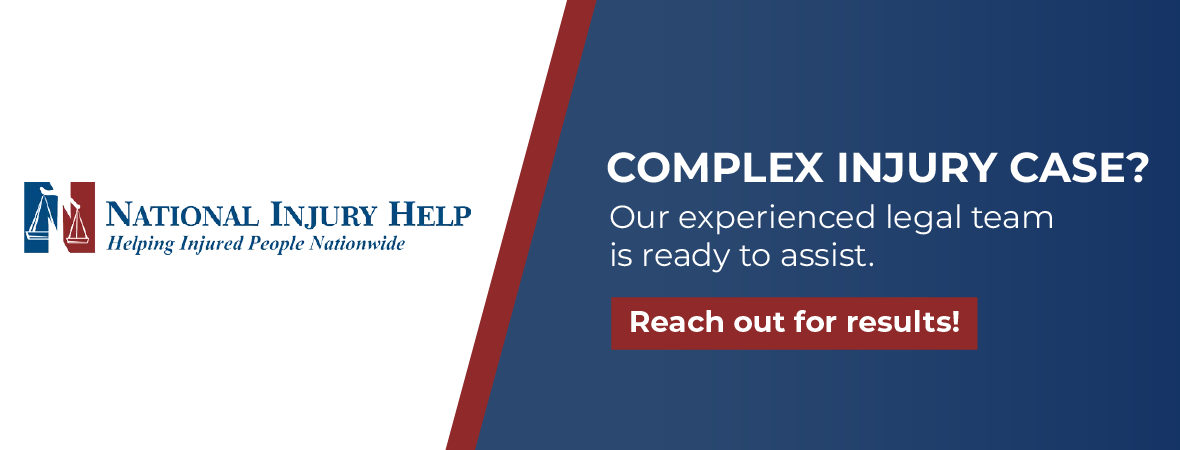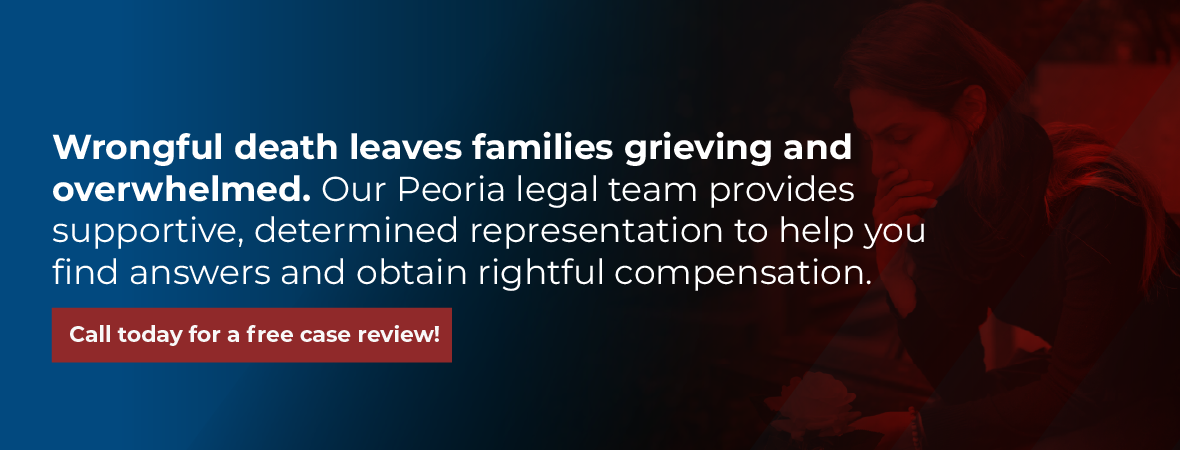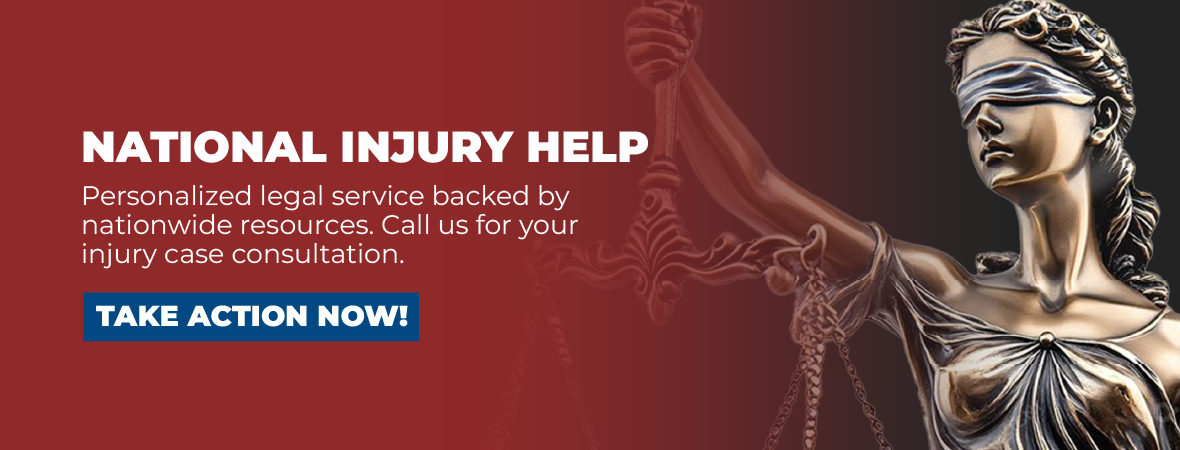Losing a loved one due to someone else’s actions is devastating. This article outlines who can file a wrongful death claim in Peoria and what compensation may be available. Contact National Injury Help at 1 (800) 214-1010 for assistance in seeking justice and financial support during this challenging time.
Nothing hits harder than the sudden death of someone you love. Your world changes in one phone call. You feel shock first, then grief, then a flood of worries about funeral bills, mortgage payments, and the future that now looks completely different.
When a careless driver on Loop 101 runs a red light, or when a surgeon leaves an instrument inside a patient, the loss feels even heavier because you know it did not have to happen. Arizona law cannot bring your loved one back. What the law can do is give your family a path toward financial stability and a measure of justice.
A wrongful death claim is that path. It is a civil lawsuit that asks the court to order the person or company at fault to pay money damages. The process is not about punishing a crime. It is about helping the surviving spouse, children, or parents recover the income and support that the family member once gave, and it is about recognizing the deep emotional scars that never truly disappear.
Filing a claim can feel overwhelming when grief is still fresh, but the right attorney makes the legal work feel manageable by taking the paperwork, phone calls, and negotiations off your shoulders.
Our office focuses on wrongful death cases in Peoria and across the West Valley. We understand Maricopa County court rules, local insurance practices, and the tight deadlines that can bar your claim if you wait too long.
In this guide, we explain how Arizona defines wrongful death, who may file, what damages you can seek, and how the legal process unfolds from the first consultation to trial or settlement.
You will also learn why having a lawyer beside you levels the field when insurance companies try to shift blame or minimize loss. By the end of this article, you will know your rights and the immediate steps that protect them.
What Is Considered Wrongful Death in Arizona?
Understanding the definition of wrongful death is the first step toward any claim. The concept rests on a few key legal ideas that come from state statutes and long-standing court decisions.
Arizona Revised Statutes §12-611
Arizona law sets the legal groundwork in section 12-611. It says a wrongful death occurs when a person dies because of another party’s wrongful act, neglect, or default. In simple terms, if the deceased could have filed a personal injury lawsuit had they survived, their close family or estate can file a wrongful death suit now that they are gone.
This statute turns the injury claim the loved one never got to file into a new civil action that benefits those left behind.
Types of Incidents That Qualify
Wrongful death covers a wide range of fatal incidents. High-speed crashes on Grand Avenue, drunk-driving collisions on Bell Road, and tractor-trailer wrecks on Loop 101 all fall under the law when a driver’s negligence causes the crash. Medical malpractice also qualifies. A birth injury, a misread scan, or a surgical error that leads to death can support a claim.
Falls from scaffolding on construction sites, defective consumer products that explode, and unsafe property conditions that cause fatal injuries are equally recognized. If negligence or a defective item played a role in the death, the statute likely applies.
Civil vs. Criminal Cases
Families sometimes confuse wrongful death lawsuits with homicide charges. A criminal case seeks to punish through imprisonment or fines paid to the state.
A wrongful death case is civil. It seeks money that goes directly to the surviving family or estate. Both actions can happen at the same time. A driver who faces manslaughter charges can also be the defendant in a civil wrongful death suit.
Time Limit to File
Arizona enforces a two-year statute of limitations for wrongful death claims, counted from the date of death. Missing that deadline almost always ends the right to file.
Rare exceptions exist, such as when the family did not learn about malpractice until later, but those cases are rare. For government defendants, a formal notice must be served within one hundred eighty days. Prompt legal advice ensures deadlines never slip away.
Peoria Wrongful Death Attorney Explains Who Can File a Wrongful Death Claim in Peoria, AZ
Arizona limits standing to specific relatives and representatives. Knowing where you fit helps avoid disputes and delays.
Eligible Parties Under Arizona Law
The surviving spouse stands first in line. If there is no spouse, the children of the deceased, including adult children, may file. When there are no spouses or children, the parents have the right.
Finally, if none of these relatives exist or if they choose not to act, the personal representative of the estate may file on behalf of all beneficiaries. The representative is often named in a will or appointed by the probate court.
Multiple Claimants
When more than one eligible relative wants to file, Arizona courts usually prefer a single unified claim. All beneficiaries are named, and any award is divided according to the damages each suffered. A single action avoids conflicting verdicts and reduces legal costs.
Wrongful Death on Behalf of a Child or Minor
If the deceased is a child, the parents share equal rights to file unless parental rights were terminated. A legal guardian can act if a parent cannot. The court reviews any settlement to ensure it serves the minor siblings’ or the estate’s best interests.
Leading Causes of Wrongful Death in Peoria
Each community has unique risk factors. Peoria’s mix of busy highways, construction growth, and healthcare facilities shapes its profile.
Car and Truck Accidents
Loop 101 curves around the city and funnels fast traffic toward I-17. Grand Avenue carries a steady flow of commuters and commercial trucks. Bell Road’s intersections see heavy retail traffic.
When a distracted driver clips a motorcycle or a fatigued trucker drifts across a lane, the collision often proves fatal. Police reports, camera footage, and electronic data recorders become key evidence.
Medical Malpractice
The West Valley’s growing hospitals and surgical centers deliver life-saving care every day, yet mistakes still happen. A surgeon may operate on the wrong site. A radiologist might miss a tumor. Nurses can administer the wrong medication dosage. When these errors end a life, a wrongful death suit holds the provider or facility financially accountable.
Workplace or Construction Site Accidents
Peoria’s skyline includes cranes and scaffolding as new apartment complexes and office buildings rise. Falls from heights, electrocution, and heavy equipment failures cause fatalities on these sites. OSHA reports, employer safety logs, and equipment inspection records help lawyers prove negligence.
Motorcycle and Pedestrian Fatalities
Sunny weather invites year-round riding and walking. Intersections lacking clear signals, especially near older neighborhoods, create danger. Motorists who fail to yield or who speed through turns often strike riders and pedestrians, leading to deadly injuries.
Defective Products or Unsafe Property
A faulty airbag, an exploding vape battery, or a building with missing handrails can all be fatal. Product engineers, maintenance logs, and expert testing uncover the defect that cost a life.
Damages an Experienced Peoria Wrongful Death Attorney Can Help Families Recover
Arizona law groups damages into economic, non-economic, and punitive categories. Each serves a different purpose.
Economic Damages
These losses come with bills or measurable numbers. Funeral and burial expenses fall here. Medical costs incurred between injury and death count as well, even if only hours passed. Perhaps the loved one spent days in the ICU before passing. Those invoices join the claim.
The largest economic loss is often expected household income and services. If the deceased worked full time, an economist projects career earnings to retirement age, adjusting for raises and inflation. If the person provided childcare or elder care, the cost of replacing those services is calculated.
Non-Economic Damages
No receipt shows the worth of companionship, guidance, or the simple comfort of seeing a loved one’s smile across the dinner table.
Yet the law recognizes these losses. Survivors may claim damages for grief, sorrow, and loss of consortium. These amounts vary widely and rely on testimony about family relationships, daily routines, and the emotional void created by the death.
Punitive Damages
Punitive awards are rare but powerful. Courts allow them when the defendant acted with reckless indifference or intentional harm.
A trucking company that ordered drivers to falsify logbooks, leading to a fatigue crash, or a manufacturer that hid data about a deadly defect may face punitive damages. These awards punish and deter, beyond compensating families.
How Damages Are Calculated
Attorneys gather tax returns, pay stubs, and employment records to estimate lost income. Actuaries consider the deceased’s age, health, skills, and career trajectory.
For non-economic losses, lawyers present witness testimony, photos, and journals. Judges or juries weigh these stories alongside expert opinions to set a dollar value.
How a Peoria Wrongful Death Attorney Can Help
An attorney provides both practical support and legal strategy, easing the burden while building a solid case.
Investigate the Cause of Death
Our firm hires accident reconstruction specialists, medical experts, and forensic accountants. We collect dash-cam video, black-box data, hospital charts, and safety inspection reports. Each piece fits into a timeline that shows exactly where negligence occurred.
Prove Negligence or Misconduct
Every wrongful death claim requires four elements: duty of care, breach of that duty, causation linking the breach to death, and resulting damages. We gather documentation and expert opinion to establish each element beyond dispute.
Communicate With Insurance and Opposing Counsel
Insurers often contact families quickly, hoping grief will push them to accept a low offer. We handle every call and letter, preserving your peace. Our team prepares demand packages backed by evidence that leave little room for denial.
File a Lawsuit If Needed
When negotiations stall, we draft a complaint and file it in the Maricopa County Superior Court. We follow civil rules, meet discovery deadlines, and argue motions. Our readiness signals seriousness, often prompting better settlement terms.
Work on Contingency
We advance costs such as filing fees, expert deposits, and investigative expenses. Our fee comes from the recovery, never from your pocket. If we fail to secure compensation, you owe no attorney fee.
The Wrongful Death Claim Process in Arizona
The journey moves from evaluation to resolution, sometimes ending in settlement and sometimes in trial.
1. Case Evaluation (Initial Consultation)
The process begins with a free consultation with a wrongful death attorney who listens to your story. During this meeting:
- You share the details. You explain what happened, who was involved, and how you and your family have been affected.
- Documents are reviewed. The attorney examines the death certificate, accident or incident report, medical bills, and potentially related records.
- Legal routes are outlined. Your lawyer explains who may file a claim under Arizona law (spouses, children, and possibly parents). They clarify which damages may be eligible for recovery: medical and funeral costs, lost income, loss of companionship, and emotional distress.
- Deadline reminders. Arizona law generally requires wrongful death claims to be filed within two years. Cases involving government entities may have shorter deadlines; don’t miss them.
- Timeline for action. A preliminary timeline is set. If the investigation has just begun, your attorney will act quickly to preserve evidence like surveillance footage, vehicle data, or site photos that may disappear over time.
After this stage, you and your attorney decide whether to move forward. If the case has legal merit, the next step is poking deeper into the facts.
2. Investigation and Evidence Collection
The goal in this phase is to build a strong case showing both fault and damages.
Site visits and hazard documentation
- The lawyer visits the accident scene, whether a roadway, nursing home, factory, or storefront, and takes photographs and measurements.
- If the incident involved a dangerous condition (like a broken guardrail or unprotected machinery), the attorney notes it in detail to show negligence in maintenance or inspection.
Witness interviews and recorded statements
- Anyone who saw the incident or its aftermath is interviewed. These witnesses often speak more openly when no defendant is present.
- Under oath interviews may occur once the case moves toward formal discovery.
Subpoenas for records
- Phone logs, trucking driver logs, maintenance records, security cameras, cell tower data, hospital charts, and other documents are requested through subpoenas. Experts may analyze these records.
Expert analysis and reconstruction
- In some cases, engineers recreate the event. For a wreck, they may simulate the crash using video animation, measuring vehicle speed or distance. For a medical facility case, hospital care standards may be compared to what happened.
- These experts provide detailed reports explaining how the harm occurred and what could have been done to prevent it.
Medical review
- Physicians, life-care planners, and economists establish actual losses. Expenses for medical care, funeral arrangements, lost wages, projected future earnings, and the need for future help are documented.
By the end of the investigation, your legal team will have four core elements:
- Who is at fault
- Why are they at fault
- What damages occurred
- Supporting evidence to back your claims
3. Demand Letter and Settlement Negotiation
Once you have a strong foundation, your attorney issues a demand letter to the at-fault party’s insurance company that includes:
- A summary of facts and legal responsibility
- An itemized list of damages, medical costs, funeral bills, ongoing care, lost income, grief, and loss of support
- A dollar amount that reflects the total value of the claim
Negotiation process:
- The insurer reviews the demand and either makes a settlement offer or disputes the facts.
- Your attorney replies, using evidence to counter lowball offers or delays.
- Negotiations may take weeks or months. Each round of offers is weighed.
- Settlement offers often improve once the insurer sees that your case is strong and a lawsuit is likely.
Why do many cases end at this stage?
- Litigation is expensive and emotionally draining.
- If you have complete medical records, clear fault, expert reports, and detailed damage documentation, many insurers prefer to settle rather than risk a full trial.
However, if settlement offers remain too low or faulty, the next stage awaits.
4. Filing a Lawsuit (Litigation Begins)
When settlement fails, your attorney will file a formal lawsuit in the appropriate Arizona court, usually Pinal or Maricopa County Superior Court. Here is the litigation process:
- Complaint: A legal document is filed listing the parties, facts, legal wrongdoing, and requested damages.
- Service to the defendant: A copy of the complaint is delivered to the at-fault party or their insurer, who then has a set time (usually 20–30 days) to respond.
- Discovery: Both sides exchange essential documents, such as medical bills and witness statements. Interrogatories (written questions) are submitted and answered under oath. Depositions take place, lawyers question plaintiffs, witnesses, experts, and defendants under oath in front of court reporters. Medical, financial, and technical experts submit reports to support or challenge claims.
- Motions and pre-trial rulings: Discovery triggers other actions, and defendants may file motions to dismiss or to limit certain evidence. The judge will rule on what evidence may be presented at trial.
- Mediation or court-ordered settlement conference: Arizona courts often require mediation before a trial date is set. An impartial mediator facilitates negotiation. With expert reports in place, parties often settle during this phase.
5. Trial or Last Offer
If settlement continues to fail, your case proceeds to trial:
- Jury selection begins the process
- Opening statements lay out the timeline of events for jurors
- Evidence presentations include videos, photos, expert testimony, and witness statements
- Closing arguments summarize key reasoning and demand a fair verdict
- The jury deliberates and decides liability and compensation
Verdict rates can vary. If your case is strong and the facts are clear, a trial can yield full-value awards. A positive outcome may take a few months or more to process. If damages are awarded, defendants or insurers have the right to appeal, which can extend the timeline.
FAQs About Wrongful Death Lawsuits in Peoria
What is the difference between wrongful death and murder?
A murder charge is criminal and brought by the state to punish wrongdoing. A wrongful death lawsuit is civil and seeks monetary damages for the family. Both can proceed from the same event.
What if the deceased did not work?
Families can still sue. Economic damages include loss of household services such as childcare, elder care, cooking, and transportation. Non-economic damages also apply.
Can multiple family members receive compensation?
Yes. Eligible relatives share one claim. Any award is distributed according to each person’s loss as determined by the court.
Will filing a lawsuit cause more emotional distress?
Litigation can feel stressful, yet many families find relief in knowing someone fights for their loved one’s memory. A lawyer shoulders legal tasks so you can focus on healing.
How long does a wrongful death claim take in Arizona?
Timelines vary. Straightforward liability and lower damages can be resolved in months. Complex events, large damages, or disputed negligence can stretch beyond eighteen months, especially if the case reaches trial.
Talk to a Peoria Wrongful Death Lawyer Today
Losing someone you love is heartbreaking, especially when their death could have been prevented. When a person dies because of someone else’s negligence or reckless behavior, the law allows surviving family members to seek justice. At National Injury Help, we are here to support you during this painful time and help you understand your rights.
Our experienced wrongful death lawyers serve Peoria and nearby cities such as Glendale, Surprise, and Sun City. We know that no amount of money can bring your loved one back, but a successful legal claim can ease financial burdens, provide stability, and hold the responsible party accountable.
You may be able to recover compensation for funeral costs, lost income, emotional pain, and the loss of companionship. We will guide you through each step of the process and handle the legal work so that you can focus on your family and healing.
You do not need to face this alone. We offer a free consultation to review your case, and you will not owe us anything unless we win compensation for you. We believe that everyone deserves access to justice, regardless of their financial situation.
If someone else’s actions led to the death of your loved one, do not wait. Time limits apply to wrongful death cases, and early action can make a difference.
Call 1-800-214-1010 today to speak with a fatal accident lawyer in Peoria. We are here to listen, answer your questions, handle your wrongful death lawsuit in Arizona, and help you take the next step toward justice.


